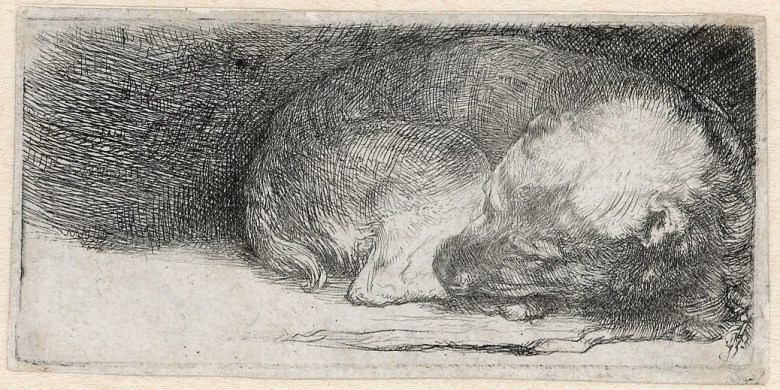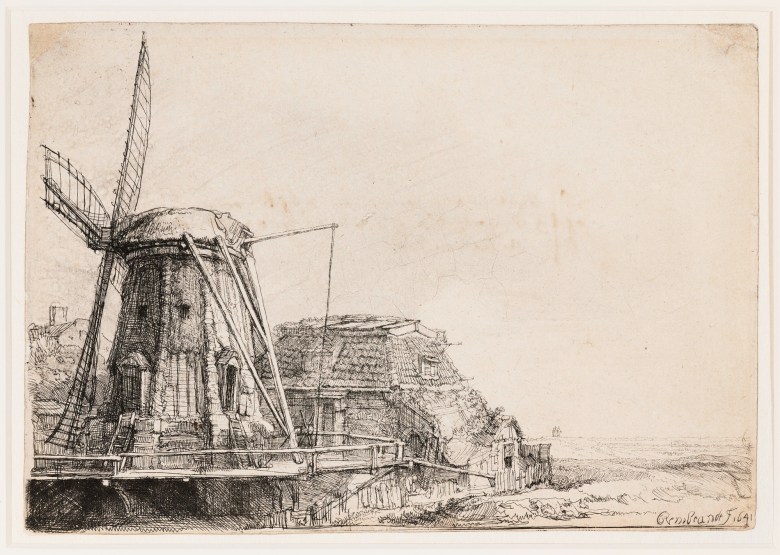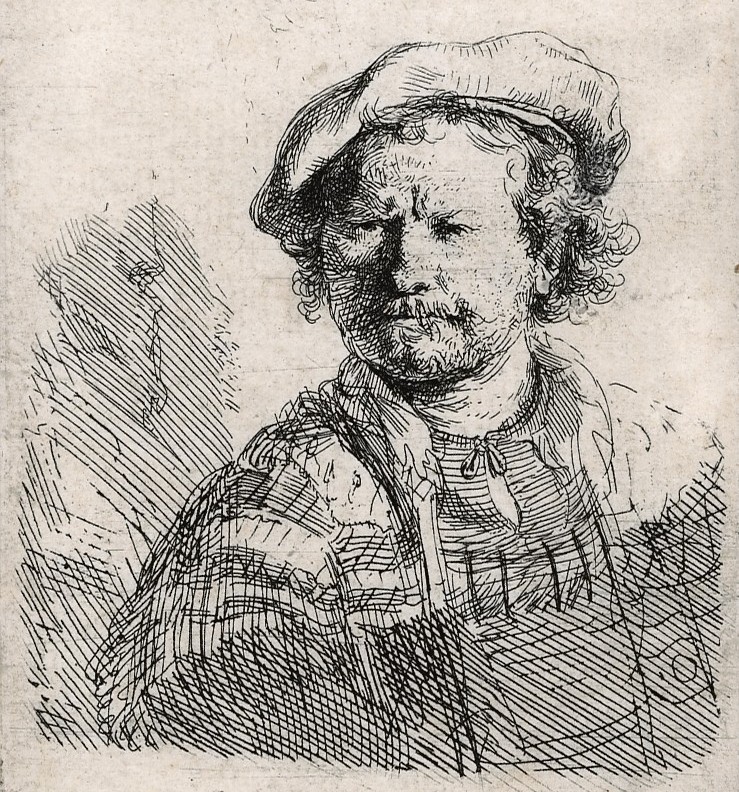The Gibbes Museum of Art has landed the inaugural stop next month of a high-profile tour of etchings of 17th-century Dutch master Rembrandt.
The tour marks the first time the works have traveled out of the Netherlands to the U.S. as a collection. The exhibition also is a first big win for new Gibbes Museum of Art’s president and CEO Alex Rich, who took over this fall after the retirement of longtime director Angela Mack.
Rich said Charleston makes for ideal terrain to launch the Rembrant tour, noting the exhibition explores not just artist’s work but also the milieu in which it was produced.
“The geographical and geological similarities between Amsterdam and Charleston are plentiful — Lowcountry maritime cities, cultural landmarks, trading centers,” Rich said. “But our two cities are alike also in spirit and the spirit of the people who call each city home Amsterdam and Charleston are unique and with inhabitants who savor that uniqueness.”
The landmark exhibition “Rembrandt: Masterpieces in Black and White ‒ Prints from the Rembrandt House Museum,” will be on view in the third-floor galleries of the Gibbes from Oct. 24, 2025, to Jan. 11, 2026.
The exhibition, which was previously mounted in Europe at the Birmingham Museum and Art Gallery, in the United Kingdom, was co-organized by the American Federation of Arts (AFA), which is the leader in traveling exhibitions in the U.S. and worldwide, and the Rembrandt House Museum, the world’s only museum exclusively dedicated to Rembrandt Harmenszoon van Rijn (1606–1669) that holds the collection. The Amsterdam museum is based in the house, studio and shop in which the artist lived and worked.
 “Sleeping Puppy,” Rembrandt van Rijn, c.1640. Credit: “Rembrandt: masterpieces in Black and White — Prints from the Rembrandt House Museum.”
“Sleeping Puppy,” Rembrandt van Rijn, c.1640. Credit: “Rembrandt: masterpieces in Black and White — Prints from the Rembrandt House Museum.”
A first-ever tour
Curated by Epco Runia, head of collections at the Rembrandt House Museum, the exhibition features 58 works (44 by Rembrandt and 14 by later 19th and 20th century artists influenced by his work). It is divided into 13 sections, covering Rembrandt’s legion skills as a visual narrator, his hallmark exploration of light and dark and how he used self-portraits in exploring visual identity as well as the complexity of aging.
It also represents a significant three-part collaboration to offer American arts enthusiasts a nuanced vantage of one Western culture’s most honored artists, and his integral, enduring role in printmaking.
“International collaborations of this scale are usually afforded only to large metropolitan areas like New York and Los Angeles,” said AFA Director and CEO Pauline Forlenza. The AFA has a longstanding relationship with the Gibbes Museum, with the upcoming exhibition the third since 2019, including “Romare Bearden: Abstraction and Black Refractions: Highlights from The Studio Museum in Harlem.”
“Our prior successful collaborations with the team were key factors,” Forlenza said. “The curatorial and educational programming aligns greatly with AFA’s mission. In addition, Charleston, a cultural beacon of the South, is a city rich in both history and the arts. A city of such vibrancy, paired with an institution of this caliber, makes it the ideal place to launch the U.S. leg of the tour.”
 “The Windmill,” Rembrandt van Rijn, c. 1641. Credit: “Rembrandt: masterpieces in Black and White — Prints from the Rembrandt House Museum.”
“The Windmill,” Rembrandt van Rijn, c. 1641. Credit: “Rembrandt: masterpieces in Black and White — Prints from the Rembrandt House Museum.”
The power of print-making
Rembrandt had a centuries-long impact on the field of printmaking, including on the works by Picasso,Whistler and others. Part of the Dutch Golden Age, Rembrandt was known for constantly seeking new methods of creating art, making more than 300 etchings during his career. The exhibition will also display two original copper plates used by Rembrandt, alongside the resulting prints.
Beyond employing printmaking to highlight other works, which was the modus operandi of many of his contemporaries, Rembrandt embraced etching as a means for the work itself, applying his storytelling approach to subject matter including Biblical stories and portraits, as well as observations of everyday life and more, to create original compositions expressly for the medium.
“Rembrandt is widely known for his impressive, emotionally charged paintings. His prints are much less well known. But that doesn’t make them any less interesting, as they cover a much wider range of subjects,” Runia said. “That’s why it’s so exciting to be able to show them at the Gibbes now, enabling us to introduce a new audience to these beautiful works of art.”
The curator explained that the exhibition explores Rembrandt’s strengths as an experimental etcher, in particular his visual storytelling and focus on drawing “from life.” It shows how Rembrandt grew to be arguably the most creative print artist of the seventeenth century and highlights how his graphic oeuvre has served as a source of inspiration for artists in the centuries since.
“Visitors might discover that each of Rembrandt’s prints is a work of art in itself. Take the time to look at them closely and a whole world opens up to you: a world in black and white, but with enormous visual richness.”
Given the intricacies of the works, which are small in scale, the curators of the exhibition encourage the concept of “slow looking,” or allowing sufficient time with each work to engage as unexpected connections and details reveal themselves throughout them.
“This show promises to be a revelation to many visitors who may think of Rembrandt solely as a painter or self-portrait artist,” Rich said. “When they come to see Rembrandt and realize his prowess as a printmaker, audiences will never think of him the same way again; when they visit the rest of our collection after touring the show, they will also think about lesser-celebrated artists we have on view elsewhere in new ways, too.”
Rich said he would like to think that Rembrandt would have felt very much at home in Charleston. He observed that the Rembrandt House could find an analogue in any number of Charleston homes on the peninsula, making the Gibbes an apt launch site for the U.S. leg of the exhibition’s tour.
“More than anything else, though, the Gibbes is simply one of our country’s best museums — albeit one that is perhaps still too hidden a gem — and with Rembrandt’s etchings on view we can continue to underline that Charleston and the Gibbes are increasingly a locus of the American cultural scene.”
To further mine the collection and its enduring impact, the Gibbes Museum has created an expansive series of programming and events surrounding the exhibition.
IF YOU WANT TO GO: The exhibition opens Oct. 24 and runs through Jan. 11 at Gibbes Museums of Art, 135 Meeting St. More: gibbesmuseum.org.
Related
Help keep the City Paper free.
No paywalls.
No subscription cost.
Free delivery at 800 locations.
Help support independent journalism by donating today.
[empowerlocal_ad sponsoredarticles]


